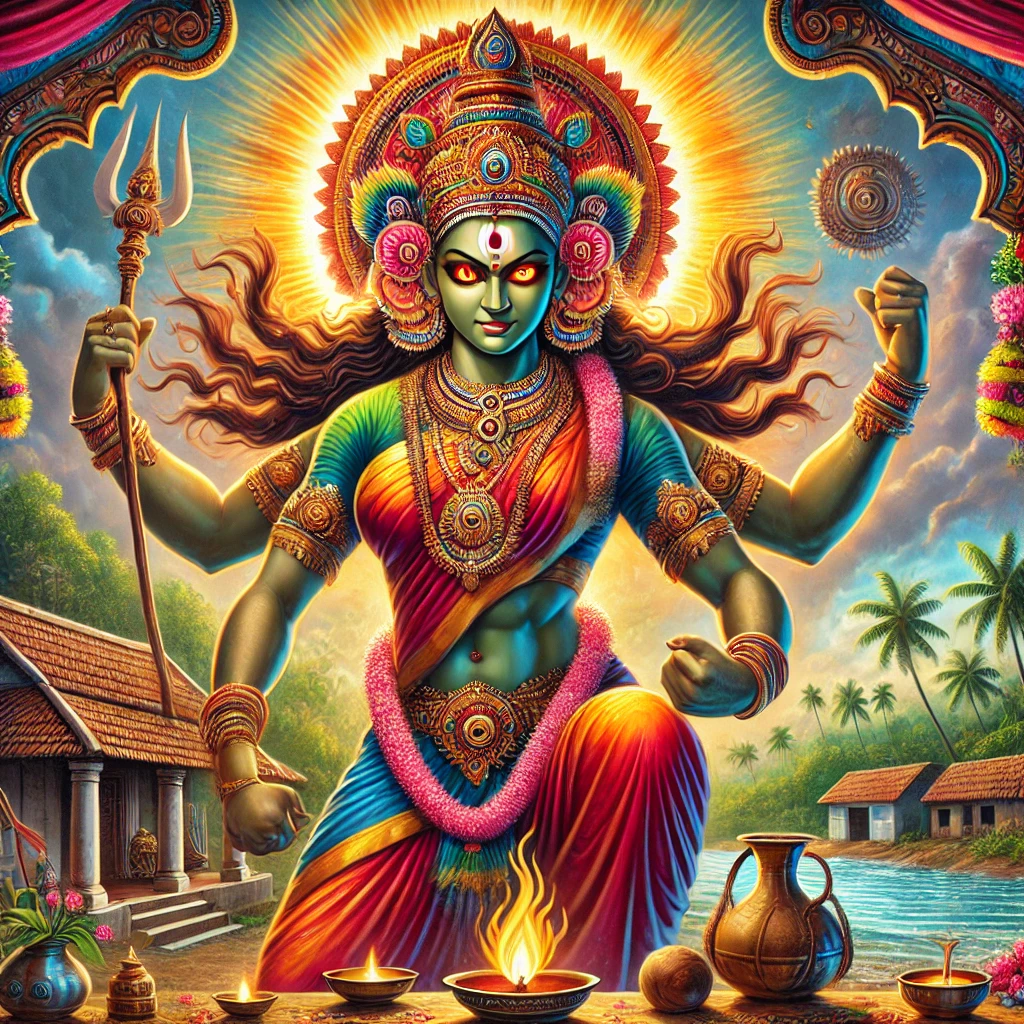Katteri Amman the name may already stir something within you. Revered as the youngest incarnation of the Divine Goddess Kali Ma, Katteri Amman—often called “Small Mother”—embodies a unique blend of love, blunt honesty, and transformative power. Her story, worship, and the myths that swirl around her offer profound lessons for seekers, skeptics, and devotees alike.
Lineage of Katteri Amman
Katteri Amman as the Incarnation of Kali Ma
Within the vast pantheon of Hindu goddesses, Kali Ma stands as the ultimate force of destruction and renewal. Katteri Amman is recognized as her youngest earthly incarnation—a role akin to how Adi ParaShakti manifested as Sati, and later as Parvati. The idea that “any form below her would be a reincarnation of her” reflects the Hindu principle that divinity wears many faces, each suited to the needs of the time and the devotee.
Many Faces of Shakti
The phrase Ekam Sadvipraha Bahudha Vadanti—“While Truth is One, the Names are Many”—captures the heart of Katteri Amman’s identity. Just as Shakti manifests as Durga, Kali, or Parvati, Katteri Amman’s forms and stories are as diverse as her devotees. Each incarnation possesses a unique personality, set of powers, and spiritual lessons.
Real Meaning of “Katteri”
The “Blood Sucker” Myth
A quick search online reveals a common misconception: the Tamil word “Kateri” is often translated as “blood sucker,” leading some to label Katteri Amman as a vampiric figure. This interpretation, however, misses the deeper truth. In the context of her worship, the name Katteri refers to her ability to remove disease from the blood—sucking out sickness, not life.
Healing, Not Harm
This healing aspect is central to her worship. Devotees recount stories of miraculous recoveries and relief from chronic illness after sincere prayers to Katteri Amman. In this way, she is less a harbinger of fear and more a guardian of health and well-being.
Character of Katteri Amman
Why Her Story Matters Less Than Her Presence
Many origin stories swirl around Katteri Amman, but as devotees often discover, knowing her myth is less important than experiencing her character. She is described as loving yet blunt, compassionate yet demanding. Her presence is felt most strongly not through grand tales, but through daily devotion, meditation, and the subtle, transformative changes she brings to her followers’ lives.
Practice of Devotion—Mantras, Offerings, and Rituals
Mantras for Katteri Amman
Finding authentic mantras for Katteri Amman can be challenging. Here are two that are widely used:
- Om Namoh Shree Kateri Mata Aiya Namah
- Om Shreem Hreem Kleem Kateri Shakti Namaha
These mantras are not just words; they are energetic tools for connecting with her presence.
Offerings—What Pleases the Mother?
Unlike other forms of Kali or Durga, Katteri Amman’s offerings are unique and sometimes surprising. They include:
- Flower mala (sometimes with neem and lime)
- Loose flowers, sambrani, perfume, incense
- Sweet, unblemished fruits, dry coconut, water coconut
- Sari, sweet rice, mithai
- White rum (rum, not vodka, due to its sugarcane origin)
- Cigarettes
- Balidan (sacrifice), only if specifically instructed
Preparing for Katteri Ma Puja
Preparation is key. Before conducting a puja, devotees fast for at least five days, abstaining from meat, fish, eggs, intimacy, and alcohol. The home must also be cleansed and kept free from negativity. This period of fasting and preparation is not just physical—it is a mental and spiritual detox, ensuring that only positive energy is offered to Katteri Amman.
Deeper Meaning of Ritual—Energy, Intention, and Reciprocity
The Law of Energetic Exchange
A core teaching of Katteri Amman’s worship is that what you put out into the universe, you receive. Whether through meditation, prayer, or ritual, the energy you transmit—positive or negative—will return to you. This is not a transactional exchange, but a spiritual principle echoed by many experts in the field of energy healing and psychology.
Counterarguments and Alternative Perspectives
Is Ritual Necessary?
Some argue that elaborate rituals and offerings are unnecessary—that devotion alone is enough. Others believe that the material aspects of worship are essential for focusing the mind and heart. Both perspectives have merit, and the path one chooses often depends on personal inclination and spiritual maturity.
The Dangers of Negative Rituals
A controversial topic is the use of negative rituals—practices intended to harm others by directing focused negative energy. While some claim these rituals are effective, most spiritual traditions, including the teachings surrounding Katteri Amman, warn that such actions ultimately harm the practitioner by attracting negative energy back to themselves.
Relevance of Katteri Amman
Why Her Worship Endures
In a world filled with uncertainty, the worship of Katteri Amman offers more than just hope—it offers a path to self-empowerment, resilience, and deep spiritual connection. Whether you approach her as a form of Kali, Amman, or simply as the Small Mother, her teachings remain timeless:
- Work for what you want.
- Treat others with compassion.
- Align your actions with your intentions.
- Trust that the universe returns what you give.
Living Presence of Katteri Amman
Katteri Amman is not just a figure from ancient myth—she is a living presence, guiding her devotees with a blend of tough love and boundless compassion. Her worship challenges us to look beyond ritual for its own sake and to seek transformation from within. In honoring her, we honor the divine potential within ourselves and the interconnectedness of all life.
Whether you are new to her path or a lifelong devotee, may your journey with Katteri Amman be one of growth, healing, and profound joy.



Leave feedback about this